COURSE TITLE:
THE POTENT POWER OF BELONGING
NO. OF CREDITS:
5 QUARTER CREDITS
[semester equivalent = 3.33 credits]
| WA CLOCK HRS: OREGON PDUs: PENNSYLVANIA ACT 48: |
50 50 50 |
INSTRUCTOR:
Mary Ann Johnson
maryajohnson-advisor@comcast.net
COURSE DESCRIPTION:
Our course text is a rare book that asks us to find out how some of the most challenging students can benefit from feeling the power of belonging.
Adding the balance of a focus on self-care and dealing with crisis artfully makes this a valuable resource with a radical focus on words like love, compassion, and a culture of inclusion. If this sounds like a focus you would like to embody as a teacher, you will find many how-to’s in this book.
LEARNING OUTCOMES: Upon completion of this course, participants will have:
l. Learned why students need belonging needs met before they are ready to learn and behave.
2. Learned that students need some evidence of unconditional regard in addition to rules
of class management.
3. Learned how to grow their own ability to signal empathy and inclusiveness across difficult days.
4. Found examples of heroes and current movements using these strategies.
5. Found models for classroom graphics to promote their message on a daily basis.
COURSE REQUIREMENTS:
Completion of all specified assignments is required for issuance of hours or credit. The Heritage Institute does not award partial credit.
The use of artificial intelligence is not permitted. Assignment responses found to be generated by AI will not be accepted.
HOURS EARNED:
Completing the basic assignments (Section A. Information Acquisition) for this course automatically earns participants their choice of CEUs (Continuing Education Units), Washington State Clock Hours, Oregon PDUs, or Pennsylvania ACT 48 Hours. The Heritage Institute offers CEUs and is an approved provider of Washington State Clock Hours, Oregon PDUs, and Pennsylvania ACT 48 Hours.
UNIVERSITY QUARTER CREDIT INFORMATION
REQUIREMENTS FOR UNIVERSITY QUARTER CREDIT
Continuing Education Quarter credits are awarded by Antioch University Seattle (AUS). AUS requires 75% or better for credit at the 400 level and 85% or better to issue credit at the 500 level. These criteria refer both to the amount and quality of work submitted.
- Completion of Information Acquisition assignments 30%
- Completion of Learning Application assignments 40%
- Completion of Integration Paper assignment 30%
CREDIT/NO CREDIT (No Letter Grades or Numeric Equivalents on Transcripts)
Antioch University Seattle (AUS) Continuing Education Quarter credit is offered on a Credit/No Credit basis; neither letter grades nor numeric equivalents are on a transcript. 400 level credit is equal to a "C" or better, 500 level credit is equal to a "B" or better. This information is on the back of the transcript.
AUS Continuing Education quarter credits may or may not be accepted into degree programs. Prior to registering, determine with your district personnel, department head, or state education office the acceptability of these credits for your purpose.
ADDITIONAL COURSE INFORMATION
REQUIRED TEXT
From Behaving to Belonging, The Inclusive Art of Supporting Students Who Challenge Us.
ISBN 978-1-4166-2929-0, 2021
by Julie Causton and Kate MacLeod
Buy from Amazon
None. All reading is online.
MATERIALS FEE
There is no additional materials fee.
ASSIGNMENTS REQUIRED FOR HOURS OR UNIVERSITY QUARTER CREDIT
A. INFORMATION ACQUISITION
Assignments done in a course forum will show responses from all educators who have or are taking the course independently. Feel free to read and respond to others' comments.
Group participants can only view and respond to their group members in the Forum.
Assignment #1: Introducing Yourself
In 1-2 pages, please introduce yourself and why you chose this course? Is the description something you have been seeking since you began teaching, or has it developed and increased over time?
Assignment #2: Action Plan
This course will provide an action plan to affect the school culture. To start your thinking, go to ASCD videos-Student-Belonging. Then check these short videos from the large collection:
- “Julie Causton and Kate MacLeod - A Movement to Reimagine Schools” 2:29
- “ASCD Shorts: Climate & Culture with Todd Whitaker” 1:17
- “What is School Culture and Climate?” 3:03
-
Interviews with students and staff: "What Does It Mean to Belong?"
A. In 2-3 pages, what connection do you see between school climate and the possible link with the theme of belonging?
B. Interview and make a transcript (or attach a short video) of 5 or more students and 5 or more colleagues answering the question,
"What Does It Mean to Belong?'
Assignment #3: Love & Education: How Did We Get Here?
Read the Introduction and answer one (1) of the following two questions:
A. The authors list four (4) aspects of their approach that are contrary to usual behavioral
management practices. List the four suggested approaches and tell which one(s)
speak most strongly to your current needs? Explain why that is the case in 2-3 pages.
OR
B. After reading the summaries of the eight chapters, what appealed to you, and were there any
reservations? Explain in 2-3 pages.
Assignment #4: Rethinking Students Who Challenge Us
Read Chapter One: “Rethinking Students Who Challenge Us”
Read this summary from "The Hecklinger Report" (2/14/24): Samantha Lott, a mental health coordinator for Communities in Schools North Texas, (works in Lewisville) reports that in her area: "Schools may use isolation as punishment, like forcing children to eat alone in the cafeteria--'lonely lunch'--as a consequence for misbehavior."
Complete one of the “A” questions below and one of the “B” questions:
A. Can rethinking deficit-based ideas and descriptions of students and their behavior help you as an educator?
What are the barriers you see for being able to make that shift? Write your thoughts in 300-500 words.
OR
A. What specific ideas appealed to you in the suggestions for dealing with disruptive student behavior. Write 300–500 words.
AND
B. What rocks might you carry, and what can’t we do with a student’s rock? What can we do with it? Write 300-500 words.
B. What are some of the probable outcomes for students and school culture in districts where "lonely lunch" is consequence for misbehavior?
(Write 300 to 500 words)
Assignment #5: Developing Love and Self-Care
Read Chapter 2: “Focusing on Educators’ Mental Health: Developing Love and Self-Care.” Then visit and explore this website: Choose Love and view this Youtube video: “The Making of a Movement” 4:06
A. How does the reading in the book and the origin of the Choose Love Movement overlap in their content and purpose? How might a
Choose Love workshop be received in yourschool, and how could it be arranged?
(Write 2-3 pages)
B. Why is it important to “fill your cup first?” (p.36). In the pages following (pages 37-45), what ideas were most appealing or helpful in
your own inventory of self-care? Write 2-3 pages.
Assignment #6: Belonging
Read Chapter 3: “Belonging: Putting Your Love on Display.”
- View the Facebook video about a high school promoting belonging:
- View the 12-minute trailer, https://includingsamuel.com/film, about the film “Including Samuel,” and click on Multimedia/Video for “Inclusive Education Briefing” (The whole film “Including Samuel” is available as a DVD)
- View the video about Michigan school staff who uplift students through letters.
Answer question A and one (1) other:
A. What was your opinion of authors’ method used in their workshop to help participants understand how it feels not to belong? What are
your reasons for your opinion? Write in 1-2 pages.
B. Building trust is a foundation for helping students feel they can belong. What specific activities do you use in your classroom or
school to promote all three ways of building trust: between you and the student, the student and you, and between your students?
Write 3-5 pages.
C. What are some ways you can introduce yourself, initially or on an ongoing way, to let students get to know you better?
Here are some ideas to introduce yourself to your classes: View this document.
Why is that act an important element in the intentional act of fostering students’ sense of belonging? If you did use one of these
strategies, did you notice your students after sharing? Describe what happened and your perceptions of the value of this activity.
Assignment #7: Creating a Culture of Inclusion
Read Chapter 4: “Creating a Culture of Inclusion.” Then review this website: Edutopia: Making Sure Each Child is Known. While this case study is a unique example of success in bringing students into the school culture, it is unnecessary to do projects on that scale to make school culture more inclusive.
Answer both A & B.
A. Examine your own school. What are the strengths of its current culture? What areas does your school need to grow to increase
student trust and relationships? How can belonging needs suffer with some traditional school norms and policies?
(Write 2-3 pages.)
AND
B. Considering all the ideas in this chapter, select a project you did or could do that would fulfill the scope of follow-through needed
to succeed in a difficult case of negative class climate or individual withdrawal and social ostracism.
Describe what you would do and why you would do this in a paper of 2-3 pages.
Assignment #8: Teaching Gratitude, Kindness, and Compassion
Read Chapter 5: “Teaching Gratitude, Kindness, and Compassion”
1) View TWO of these three videos:
A) https://www.youtube.com/embed/-1KCzrTg9ic?si=w8WmzIQdKW11eJ6F
B) www.dinneralovestory.com/congratulations-by-the-way
C) "Congratulations By the Way by George Saunders/Book Discourse by The Black Ponderer.”(This video is suitable for secondary students)
2) See the article and photos (below) of a response to the Kindness Challenge by Kelly Dillon and Karen Nicholson, who created the "River of Kindness" at Echo Lake Elementary School in Shoreline, WA, for a specific way to build a focus on kindness in your school.
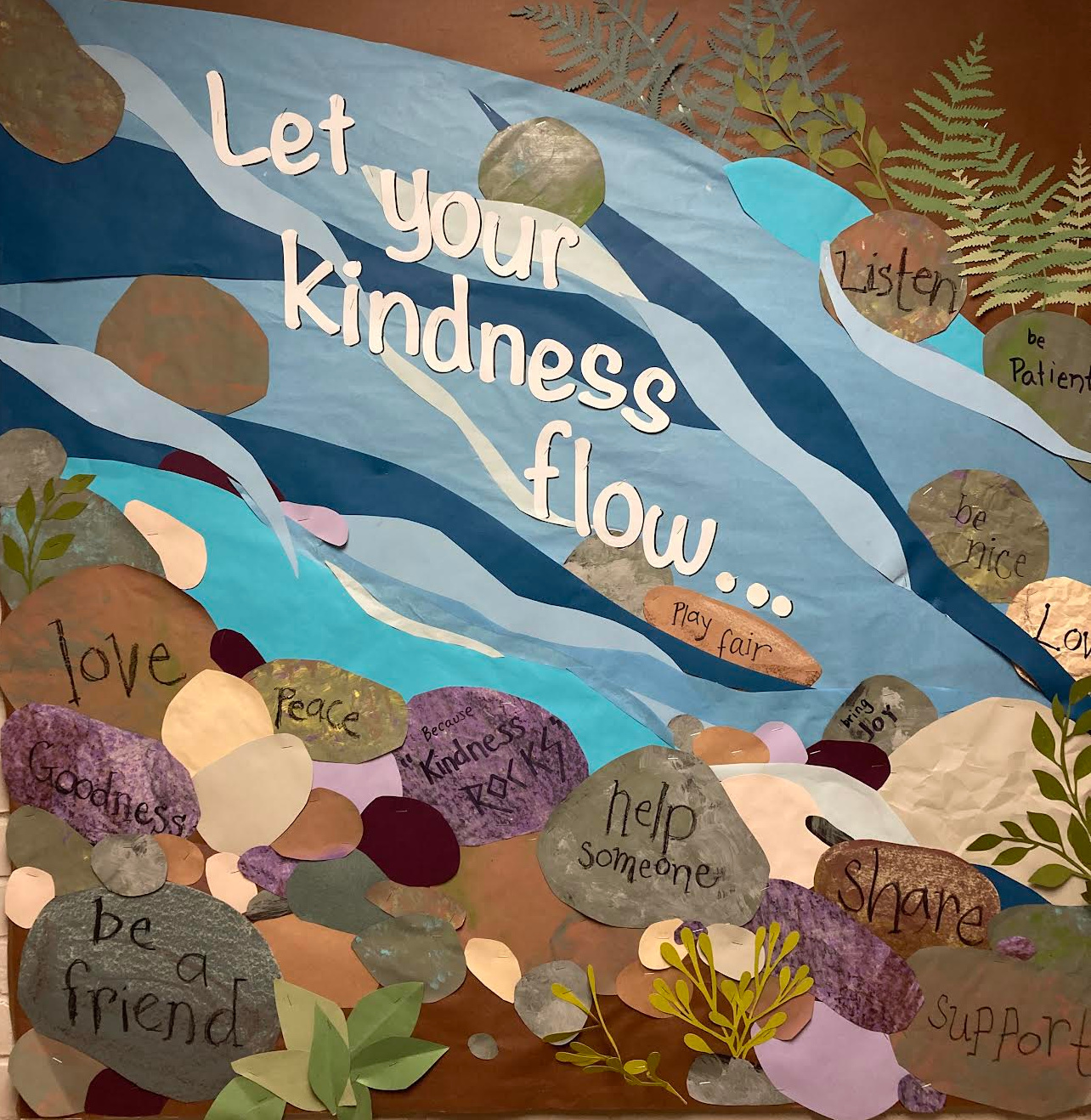
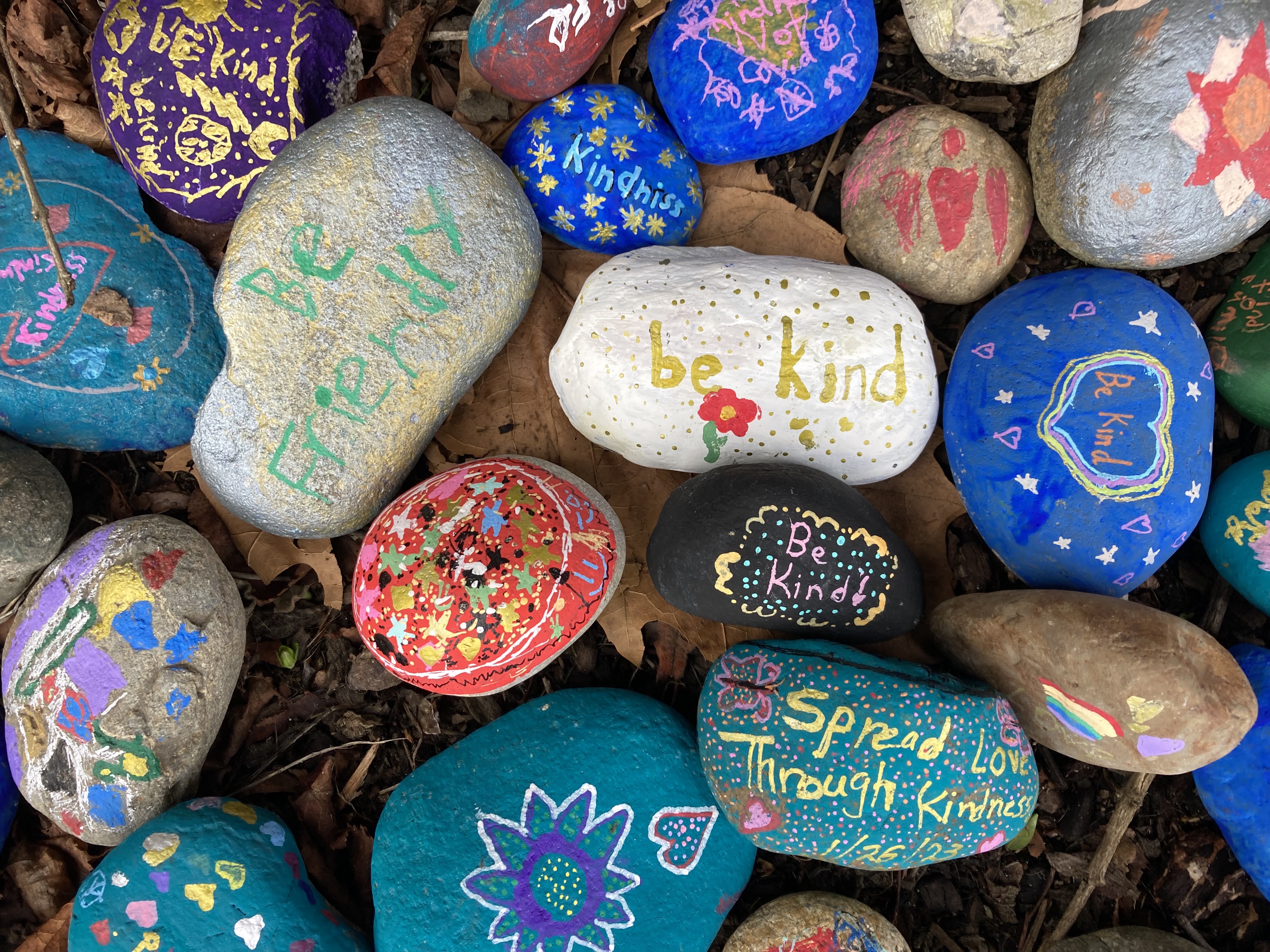
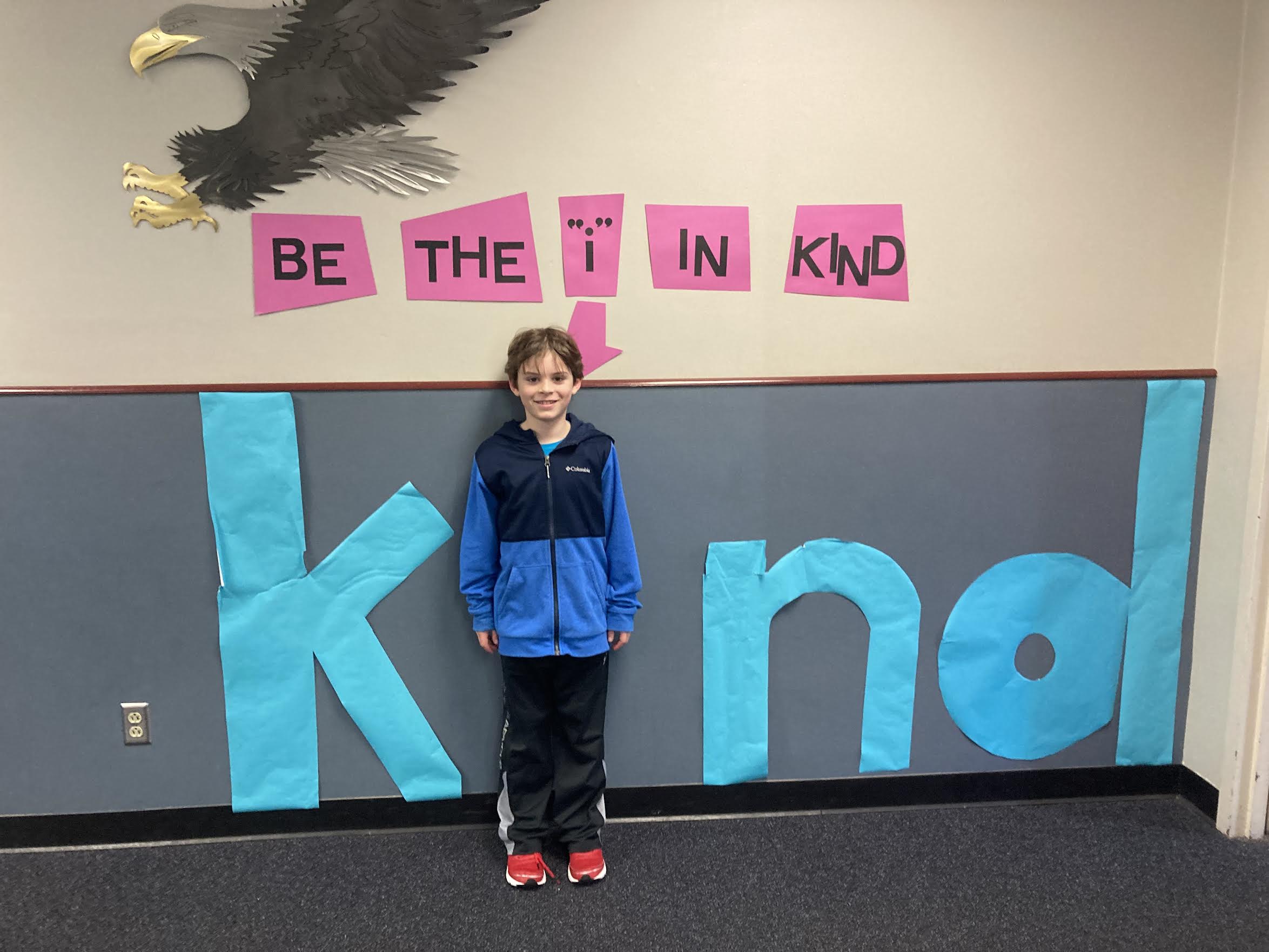
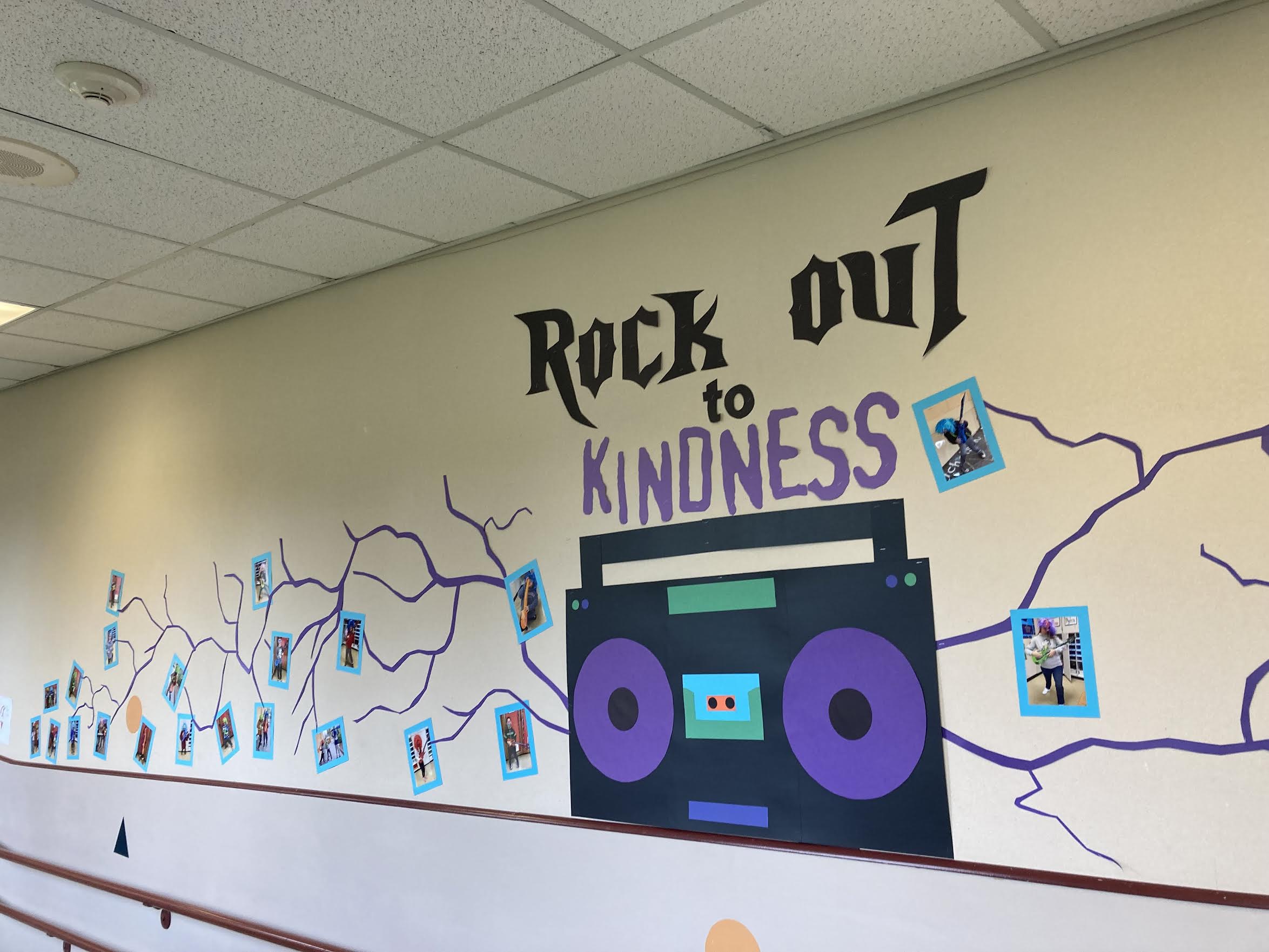
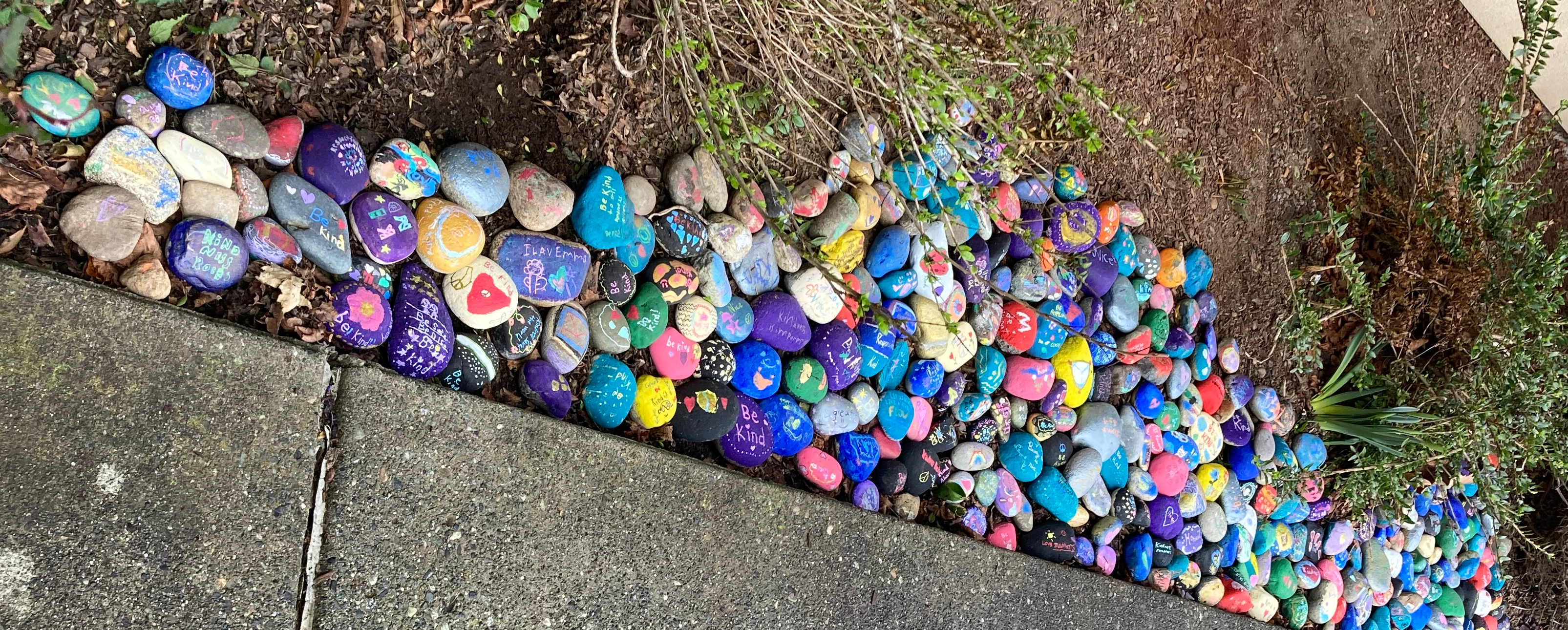
3) See two lesson plans for building a sense of the value of each student here.
Answer question any TWO below:
A. What resources in this chapter, the media, or the lesson ideas were helpful to you in your search for ideas to
foster belonging, kindness or empathy?
Explain in 300 – 400 words.
B. If a teacher were to use some of the strategies in this chapter, how do you think it would affect a student’s attitude about him/herself,
the teacher, and the school? Explain in 300-400 words.
C. Think of a time when someone made a difference in your own life by showing real kindness, compassion, and/or gratitude that stands
out in your memory. How did this act matter at the time? What does that memory do for you now?
Response in 300-400 words.
Assignment #9: Exploring Acceptance, Belonging, and Community
Read Chapter 6: “Exploring Acceptance, Belonging, and Community: Heartfelt Problem Solving.”
Then view this video by Vivek Murthy 2021 BPH Commencement Speech.
Especially focusing on the last two minutes.
Carol Ann Tomlinson, a specialist in differentiation, said in a webinar for her new book, So Each May Soar, ASCD, that students need Mirrors, to see themselves, Windows, to see others, and Doors for options to express, create, and serve. This chapter focuses on working on all three needs.
Survey your students to see how many schools they have attended. With the students, discuss the differences between those with fewer schools and those who have attended several or many schools. What are the implications for belonging in your school? Write a 200-300 word paper on what you and your students discovered from this conversation and the implications for a student’s sense of belonging. How does your school help newcomers?
Assignment #10: Dealing with Crisis Artfully
Complete Assignments A & B.
A. Consider a situation in which you feel you were not successful or satisfied with the outcome in your own handling of a student
disciplinary response.
Using the format in Figure 7.2 (p. 118), or with your own design, create a new plan to handle that situation.
(Write what you wish you could have done.)
If you have a chance to talk with the student again, begin the plan and consider how effective it may be. (If you are working with
a secondary student, consider that a sudden change to a trusting approach can be surprising, and a student may need up to
two weeks to come around and show you the benefits of your new approach.) Respond in a 1-2-page paper.
B. Go to https://www.edweek.org/leadership/opinion-stop-telling-students-you-belong/2021/11
(you are entitled to three free articles if you are not enrolled.) The author makes his case that there are three good reasons why
students may not respond well to the statement, “You belong.” What are his reasons, and do you agree or disagree? How does it fit
with the purpose of this course?
Respond in a 1-2-page paper.
Assignment #11: Proclaiming and Maintaining Loving Spaces
Read Chapter 8: “Proclaiming and Maintaining Loving Spaces” and go to Inspirationfeed.com
and view 50 of The Best Fred Rogers Quotes on Kindness, Love, and Play.
(https://inspirationfeed.com/fred-rogers-quotes/)
OR
Go to BrainyQuote.com and view quotes from Fred Rogers.
(https://www.brainyquote.com/search_results?q=Fred+Rogers)
Then choose one (1) of the projects below:
1. Create a personal proclamation like those found on pages 126 - 127, “Reclaiming Our Classrooms as Places of Love: At Teaching
Proclamation” or “Declaring Yourself as the Birthplace of Love; Personal Proclamation,” or create one with a class. Start with:
“I want you to know,” or, “I am and/or “I will.” Try to write a least 8-10 statements.
2. Choose two or three of the 12 Practices to Enhance Your Inner Wellness, and explain what you have chosen and why you
think they will be especially helpful for your own self-care in 300-500 words.
OR
3. Download some of the Fred Rogers quotes and/or posters and have students make their own posters for the classroom, or
find another source of encouraging graphics for this project. Upload pictures of the results.
ADDITIONAL ASSIGNMENTS REQUIRED FOR UNIVERSITY QUARTER CREDIT
B. LEARNING APPLICATION
In this section, you will apply your learning to your professional situation. This course assumes that most participants are classroom teachers who have access to students. If you do not have a classroom available to you, please contact the instructor for course modifications. Assignments done in a course forum will show responses from all educators who have or are taking the course independently. Feel free to read and respond to others' comments. Group participants can only view and respond to their group members in the Forum.
Assignment #12: Putting Your Love On Display
Using the concept in Chapter 3, “Putting Your Love on Display,” develop a lesson plan or visual display based on an action suggested in this book. Describe how you would introduce it and how you believe it would affect the culture of your classroom management. Write your response in 2-3 pages.
Assignment #13: Lesson Plan
Visit this website: http://www.edutopia.org/blog/habits-of-mind-terrell-heick (the original website in Chapter 4 is not available anymore.) After seeing the possibilities with materials on habits of mind, create a lesson or unit based on eight or nine of the top choices of thinking skills/habits of mind that would fit your curricular focus and/or age range of students. (The plan can be for once a month if desired.) In 3-5 pages, explain what you would do to develop the habits of mind in your plan. (Click here to find more lesson ideas for teaching Habits of Mind.)
Assignment #14: Problem Solving Project
Think of a way a class of yours could do a heartfelt problem-solving project. What would it be, and how would you introduce it? Write your ideas, how you would introduce such a project, and outline the activities it would take in a 3-5-page paper.
Assignment #15: (500 Level ONLY) Elementary & Secondary Assignment
For Elementary Teachers, create an 8 –10 pages children’s picture book narrative that would be appropriate for your students, on the theme of Belonging. (Each page can be a shorter one than a full page.) Present it to your class. Create one student response activity, like having students create illustrations, have groups select pages, and create a classroom book; create a dramatic portrayal; create a puppet show; find/list/share others’ stories from library books on the subject of belonging. Report on results or what you would like to use if you are unable to put the ideas into practice at this time.
For Secondary Teachers, find two excellent examples of a teacher in a movie, TV series, or book who uses strategies to provide more belonging needs, like using personal responses to develop relationships or using restorative justice in the classroom. Describe and analyze the outcome of these examples. (Minimum of 4-6 pages)
Assignment #16: (500 Level ONLY) Presentation
Create a handout and visual presentation for your colleagues, such as PowerPoint or Prezi, to introduce the importance of key concepts in this course for building a school climate with specific ideas for building student relationships between staff and staff, teachers and students, and/or between students and each other. Add any other elements you find would enhance your own school’s climate message based on information in the course.
Assignment #17: (500 Level ONLY)
Complete one (1) of the following:
Option A)
In 3 – 5 pages, research and evaluate at least five online or media sites focusing on key elements of the Power of Belonging approach in classrooms and schools, such as the elements of belonging needs, unconditional regard, and the practice of empathy and inclusiveness.
OR
Option B)
Select a book from the Bibliography or a book of your choice and evaluate how it validates, supplements, or compares with the information in the text of this course. Write 3-5 pages of your evaluation.
C. INTEGRATION PAPER
Assignment #18: (Required for 400 and 500 level)
SELF REFLECTION & INTEGRATION PAPER
(Please do not write this paper until you've completed all of your other assignments)
Write a 400-500 word Integration Paper answering these 5 questions:
- What did you learn vs. what you expected to learn from this course?
- What aspects of the course were most helpful and why?
- What further knowledge and skills in this general area do you feel you need?
- How, when and where will you use what you have learned?
- How and with what other school or community members might you share what you learned?
INSTRUCTOR COMMENTS ON YOUR WORK:
Instructors will comment on each assignment. If you do not hear from the instructor within a few days of posting your assignment, please get in touch with them immediately.
QUALIFICATIONS FOR TEACHING THIS COURSE:
Mary Ann Johnson, M.Ed Adm. has worked with students of all levels, from alternative high school to gifted classes. She has also been a junior high vice principal and is now working with teachers for continuing education in classes, distance learning and building leadership groups. She is a teacher emeritus who has led seminars for educators which focus on developing a quality learner environment for students and for teachers. Her courses are research-based and resonate with user-friendly and energizing content.
BIBLIOGRAPHY
THE POTENT POWER OF BELONGING
Barron, Laurie, and Kinney, Patti, We Belong, 50 Strategies to Create Community and Revolutionize Classroom Management, ASCD, 2021, ISBN 978-1-4166-3026-5. This text contains many surveys and great ways to determine how students feel about safety in their schools, and provides activities to build group bonding and strong, inclusive school climate.
Costa, Arthur L. and Kallick, Bena, Eds, Habits of Mind Across the Curriculum, Practical and Creative Strategies for Teachers, ASCD, 2009, ISBN 978-1-4166-0763-2, A rich collection of lesson plan/unit ideas for all grade levels. Enhancing thinking skills, and provides ideas for graphic projects using graphic symbols for each habit of mind, and a collection of important quotations illustrating each, as well.
Frey, Nancy, Fisher, Douglas, Smith Dominique, All Learning is Social and Emotional: Helping Students Develop Essential Skills for the Classroom and Beyond, ASCD, 2019, ISBN 978-1-4166-2704. Besides the research validating the connection between cognitive and affective aspects of human learning, the book addresses important other techniques for infusing the reinforcement of prosocial and self-regulation behaviors in the content of the curriculum, with benefits including higher standardized test scores and better evidences of an equity education. A special feature is a chapter on "Public Spirit" to include the needs and responsibilities of community membership.
Marzano, Robert J, Marzano, Jana S., Managing the Inner World of Teaching: Emotions, Interpretations, and Actions, Marzano Research, 2015, ISBN 9780990345831. Explore how to live your professional and personal life with emotional, moral, and professional integrity and contentment.
Tomlinson, Carol Ann, So Each May Soar: The Principles and Practices of Learner-Centered Classrooms, ASCD, 2021, ISBN 978-1-4166-3029-6 Unlike her usual total focus on differentiation, the author addresses the broader issue of school and classroom climate, the focus shifting more to individual student needs that can enhance curricular delivery.
